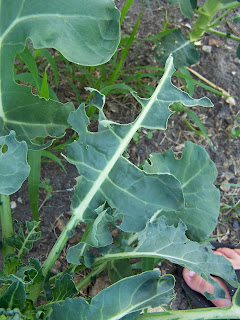Saturday morning I turned my well-traveled Honda south,
toward the land of Gilman and Danforth.
I was off to the Iroquois Historical Society’s 12th Annual Garden
Walk. Cobbled brick streets lent a
historical feel to these quaint towns and their gardeners capped that sense
with natural beauty and hometown friendliness.
I’ll bet more than one visitor to Jo Blanck’s garden found
themselves whistling Dixie. A
charming Old Glory bunting weaved in and out of her fence and porch
railing. Red verbena, petunias,
and geraniums continued the patriotic tone throughout the yard, which surrounds
her childhood home. The
significance of family was reflected in the landscape, from her granddaughter’s
hand-painted rain barrels, to the personalized bricks Jo casts herself for each
family member. The beds are pristinely
outlined with Border Magic, a concrete edging that was dyed, poured and stamped
on site.
Next door, under the canopy of shade trees, resides Peggy
Tammen’s symphony of groundcovers.
Undaunted by the deep shade, she swathed her gardens in Lamium, Sweet
Woodruff, English Ivy, Vinca, Hosta and Snow-on-the-Mountain. Alongside the house, reveling in the
glory of a sunbeam, a vibrant climbing rose shot a spark of color into the
shade. Peggy chocked her sunny
driveway bed full of catmint, coreopsis, columbine, daisy, daylily and zebra grass.
Patty Krones ‘comes out to play’ each morning in the garden
her mother started over 25 years before.
Her property boasts a mature Saucer Magnolia, Japanese Maple and Redbud,
each of them a showpiece in their own right. The perimeter of the yard is packed with more species, both
tender and hardy, than this humble reporter could hope to grow. With a 50-year-old lemon tree and a 7’
tall butterfly bush, I began to suspect that Patty was dipping her gardening
gloves in fairy dust. Her interactive
garden display included a demonstration on forming charming leaf-imprinted
concrete sculptures. Husband Steve
fashioned several trellises and one enchanting archway from recycled hog-pen
panels. So inspired was I, that
I’ve added “Stalk hog farm recycle bins” to my summer to-do list.
As I pulled up to Pat Robert’s inviting front yard, giant
Alliums reached through the front white pickets to welcome me. The tidy brick walk led to a
magazine-worthy front porch, loaded with cozy seating and cool drinks for
sun-weary garden-walk travelers. A
trek to the far side of the house rewarded my inquisitive mind. There, Pat cultivated a retreat of
botanical bounty. A cobblestone
patio is tucked in the space between house and fence, and is ensconced by a robust
garden of bleeding heart, Japanese anemone, coralbells, hydrangea, Japanese maple,
and astilbe. Bird feeders and baths
draw the attention of musical, winged entertainment.
By this point, I was behind schedule. I’d spent so much time meandering
through the first four gardens that I began to feel the tick-tock of my watch
weighing on me. I swung by the
Inside-Out shop before leaving Gilman.
The gracious shopkeeper offered me a sample of light and refreshing
white Sangria, which calmed the clamor of the clock in my head. With glass in hand, I stepped out of their
charming store, onto the beautifully cultivated back patio. The surroundings were drenched in
whimsical container plantings, lush ferns and clematis: a serene setting for
quiet conversation with friends.
Up the road to Danforth, I headed for the backyard sanctuary
of Iroquois West principal, Vicki Killus.
Vicki was relaxing in her gazebo when I stepped into the backyard; a
well-earned rest for any Garden Walk exhibitor. Closer to the house, a mass of daylilies and blooming
Knockout Roses enclosed her patio, Vicki’s morning retreat. This hard-working educator installed
the walkways that extend throughout her backyard, and lead to the gazebo and
waterfall garden, where clematis, daylilies and ornamental grasses abound.
Next door, neighbor and co-worker Tammy Dieken gardens with
husband Brad. He keeps the grass golf-course-worthy,
and Tammy gets every square foot of enjoyment out of it…literally, in her bare
feet. Her garden has evolved with
her family: space that was once littered with Tonka trucks is now spilling over
with monarda, phlox, lamb’s ear, blue fescue, and coneflower. Brad transformed the boys’ fort into a
picnic platform and created a large potting shed for his favorite gardener. Tammy’s farm girl background is
reflected in her container garden: galvanized buckets spilling over with all
manner of annual abundance.
St. John’s Lutheran Church was my last stop in the city
limits. It’s simple and clean
landscaping was highlighted with large pots near the entrances, loaded with
brightly colored annuals. Magnolia,
hosta and lilies surrounded the building.
I put a little ‘gravel in my travel’ on the rural trek to the
Shule Farm. Here, LaRee and Terry
Shule built a new house on the old family homestead. In the process of renovating the property, LaRee captured precious
family history and transformed it into landscaping grandeur. A calming waterfall empties into a large
fishpond, which sits in the foundation of her parent’s original home. At the water’s edge are bricks from her
parent’s home and flagstone from their former barn. Daylily, coneflower and ornamental grass grow en masse around
its perimeter. The Shule
beds are filled with unique antiques, many of them family heirlooms. A giant windmill head set in a field of
coneflower was my favorite, but LaRee’s impeccable taste and creativity made it
a challenge to settle for just one.


































